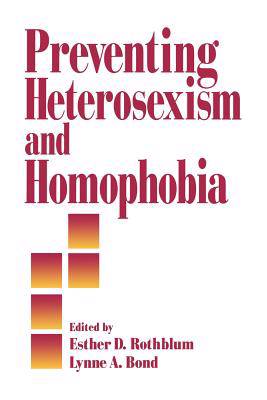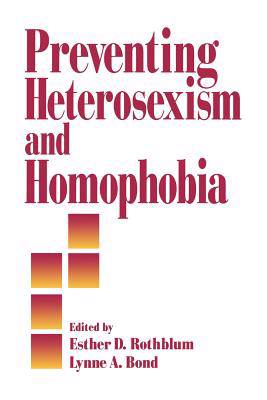
- Afhalen na 1 uur in een winkel met voorraad
- Gratis thuislevering in België vanaf € 30
- Ruim aanbod met 7 miljoen producten
- Afhalen na 1 uur in een winkel met voorraad
- Gratis thuislevering in België vanaf € 30
- Ruim aanbod met 7 miljoen producten
Zoeken
Preventing Heterosexism and Homophobia
Vermont Conference on the Primary Preven
€ 238,45
+ 476 punten
Omschrijving
Even in today′s society, gay men, lesbians, and bisexuals experience multiple pressures and constraints related to their lifestyles, in addition to the stresses of everyday life. This dual tension can result in psychopathology among gay men, lesbians, and bisexuals. Preventing Heterosexism and Homophobia examines the gay and lesbian experience in light of their tension and points toward a future free of heterosexism. The stress of "coming out," the uncertainty of parenting their children, and the difficulties facing ethnic minority lesbians and bisexuals cannot be adequately addressed without confronting the heterosexual bias in society. The contributors to this informative volume propose methods geared toward eliminating heterosexual bias in various settings--health care, therapy, communities, corporate America, and education. Ultimately, this book examines both the risks and joys of being gay, lesbian, and bisexual, and how to prevent heterosexism and its effects on the lives of all people, including those of heterosexuals. Students and professionals in interpersonal communication and interpersonal relations, clinical psychology, and public health will benefit greatly from the original perspectives this book has to offer.
Specificaties
Betrokkenen
- Auteur(s):
- Uitgeverij:
Inhoud
- Aantal bladzijden:
- 304
- Taal:
- Engels
- Reeks:
- Reeksnummer:
- nr. 17
Eigenschappen
- Productcode (EAN):
- 9780761900238
- Verschijningsdatum:
- 1/08/1996
- Uitvoering:
- Paperback
- Formaat:
- Trade paperback (VS)
- Afmetingen:
- 152 mm x 229 mm
- Gewicht:
- 449 g

Alleen bij Standaard Boekhandel
+ 476 punten op je klantenkaart van Standaard Boekhandel
Beoordelingen
We publiceren alleen reviews die voldoen aan de voorwaarden voor reviews. Bekijk onze voorwaarden voor reviews.








